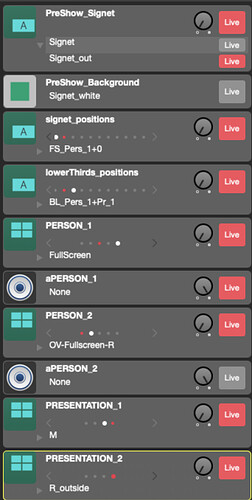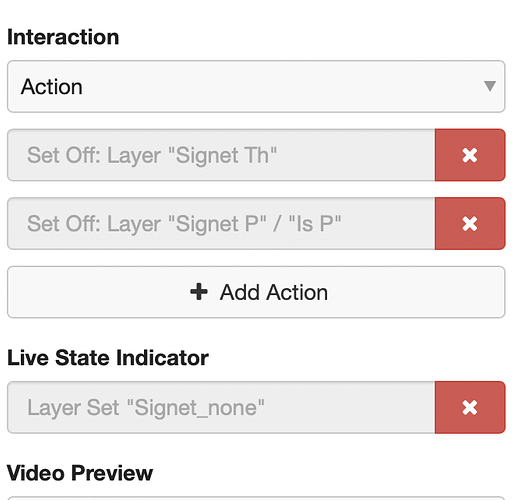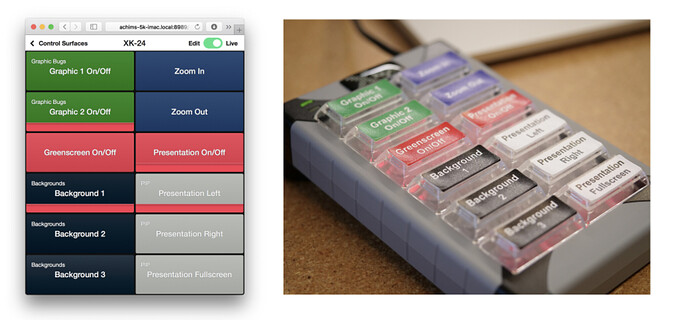(v5.10.1b3) yes, yes / no, no / depends on 
Hmmm… Software:
Control Surfaces is there to control mimoLive, and not a generic switcher to switch whatever you need. At least currently not.
You cannot control Super Marios movements in an Emulator on Solaris (except it accepts httpRequests). But you can use commands like httpRequest() to ping other software too, which is able to receive a httpRequest():
Automation-Layer (the bridge between mimoLive and all which should be automated) aims currently just Toggles inside of mimoLive and curently no “sliders” (That’s why I did a demo, to aim a wheel/slider, to make it’s importance visible). With the current version of Automation Layer (v1.32) it’s not possible to read and process the result that httpRequest() receives, so you’re not able to let your Automation Layer react on a particular result.
It’s a step by step development, so when there are no particular feature requests this may never change.
About the sliders:
The sliders in my demo video are calculated by JavaScript which is processed in a web browser. (I thought that it is clear, that mimoLive’s API does hot have API-Endpoints to aim a wheel/slider.) This Script is currently fireing - onChange - the new status to mimoLive, and onChange it receives an update of the current status. This is how the “GUI for the API” - currently - works. In lack of Endpoints with a specialized logic.
On a multi touch device, you’re able to use up to 10 fingers to slide sliders. Maybe I do not get the point.  Did you use programmable sliders, which do automatic cross fades, or something like this? As long as there are no real End-Points to aim sliders/wheels (which is definately not present, at least not now), you’re not able to profit by this logic.
Did you use programmable sliders, which do automatic cross fades, or something like this? As long as there are no real End-Points to aim sliders/wheels (which is definately not present, at least not now), you’re not able to profit by this logic.
So, even with external software, you can just trigger the result out of a responding json-object, but you have to write your own function to handle switches / sliders… So your showen sliders are also not able to do it out of the box. And again, if you miss a feature, it would be good to write a request.
So, what Requests could be now interesting to enhance all of this to your needs?
- udpRequest()?
- oscRequest()?
- midiRequest()?
- Particular Endpoints which are able to do a particular logic?
My personal speculation about this:
Some features are introduced in a quick way as a proof of concept (like this current sliders at the Control Surfaces). A piece of JavaScript is easy/simple to add. It’s also simple to remove/change/update, if necessary. An API-Endpoint on the other hand, needs more plan/development, also some kind of documentation, so all circumstances should be exactly clear, before adding this logic to the API forever.
Finally, I’m not able to give a clear yes or no, because currently all is “depends on”.  I’m simply able to recommend to know all current possibilities around the API, and to send on point Feature Requests.
I’m simply able to recommend to know all current possibilities around the API, and to send on point Feature Requests. 

 It’s bi-directional. So, as soon as it is possible to talk in other protocols, I do not see why it should be a problem to switch in different protocols the same time… Edit: X-Keys is already another protocol, which is supported.
It’s bi-directional. So, as soon as it is possible to talk in other protocols, I do not see why it should be a problem to switch in different protocols the same time… Edit: X-Keys is already another protocol, which is supported.

